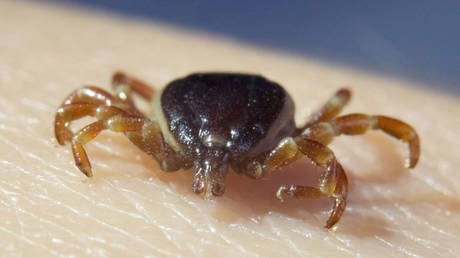
The Hyalomma arachnid is known for carrying a deadly disease
A genus of blood-sucking parasite capable of carrying a deadly disease has been spreading across Europe, according to media reports.
The Hyalomma tick, described by the media as “monster ticks,” are known for transmitting serious diseases such as Crimean-Congo hemorrhagic fever. Some species of the genus are up to four times larger, more aggressive, and more mobile than common wood ticks.
Mainly found in North Africa and Asia, the arachnid kept a low profile in Europe for decades, studies suggest. However, higher than average temperatures on the continent may have facilitated its spread in Southern Europe and on to cooler countries.
Crimean-Congo hemorrhagic fever manifests though symptoms such as high fever, muscle pain, dizziness, light sensitivity, abdominal distress, diarrhea, vomiting, and in severe instances, bleeding. According to the Polish news outlet TVP World, scientists from the University of Warsaw put the mortality rate among people infected with the virus at between 10% and 60% and warned that no cure is available.
British tourists have been warned about a “plague” of the “monster ticks” infesting holiday hotspots in Spain and Italy, according to the Sun tabloid. The ticks are in the active adult stage mainly from April to July.
The Spanish region of Catalonia has been particularly affected by the rapid expansion of the parasite. Out of 36 municipalities in the Barcelona Metropolitan Area, 28 have reportedly recorded a “massive presence” of the bug. Another Hyalomma hotspot has been reported in the northern Italian province of Trieste.
Some species of the tick have found their way to cooler climes, such as Germany, Austria, and Finland. Health experts in Poland have reportedly warned that the oversized ticks could soon reach the country’s borders.
A lack of control of wild animals such as wild boar and rabbits, which act as hosts for the tick, has also been named as a reason for the expansion. The parasites are also spread via migratory birds and livestock.
READ MORE: Bird flu virus found in US retail milk
A recent study led by the University of Zaragoza in Spain has found that the samples collected in Barcelona and the city of Tarragona carried viruses with no relevance to human or animal health. However, the study underlined the importance of taking precautions to avoid being bitten by Hyalomma ticks.




